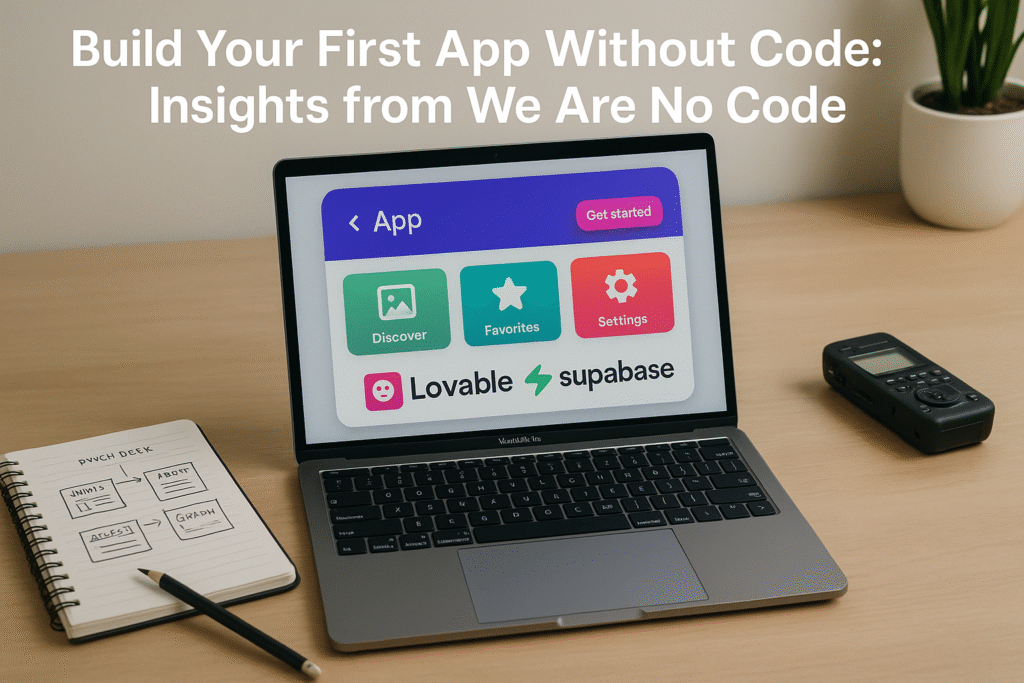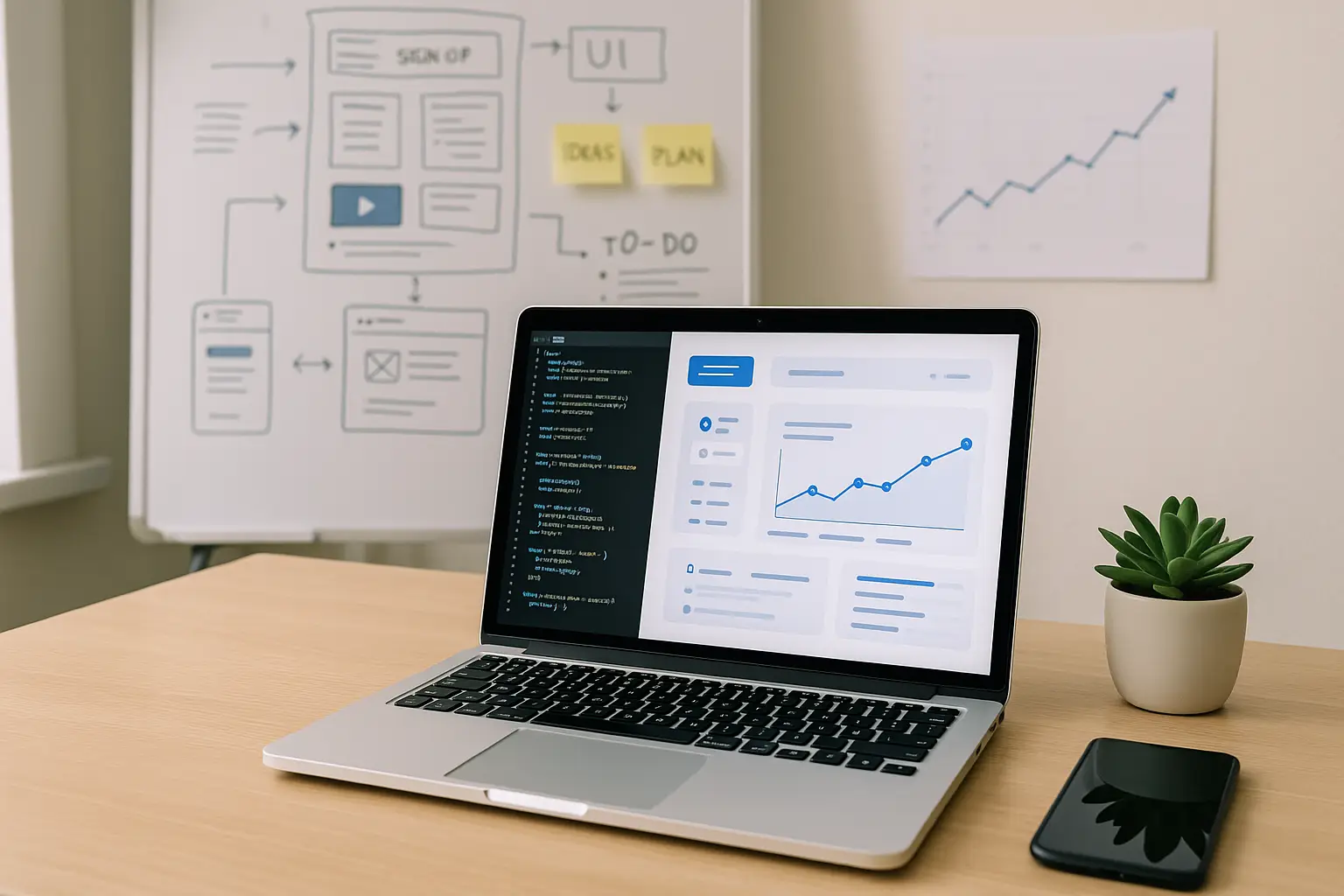Build an App Without Coding with Lovable and Supabase
What if I told you that you can build your own app from scratch without any coding knowledge or prior experience? Many would think it impossible, but over the next hour, I’m going to demonstrate just that using two powerful AI coding tools: Lovable and Supabase. This article will provide an in-depth look at how to build an application step by step, highlighting the essential features, functionalities, and integrations.
To kick things off, it’s crucial to define the app we’re going to create. As someone previously engaged in a startup accelerator program, I’ve often found that many new founders struggle to communicate their ideas effectively. This inspired me to create an application that transforms a founder’s verbal pitch into a streamlined one-liner and a fully structured pitch deck—what I call your AI pitch mentor, drawing from best practices in startup pitching.
1. Understanding the App Concept: Transforming Ideas into Actionable Pitches
In the process of app creation, especially for startup founders, the ability to effectively pitch their ideas is vital for gaining the necessary funding and support. Many aspiring entrepreneurs have innovative ideas but struggle to articulate their vision concisely and compellingly. This experience sparked the idea of developing an app that assists founders to distill their thoughts into powerful pitches.
The concept revolves around leveraging AI to transform audio recordings of founders discussing their startup ideas into streamlined content that adheres to proven pitch deck structures, such as the one developed by Guy Kawasaki. By utilizing a tool like Lovable, anyone—regardless of coding experience—can build an application that captures these audio talks, transcribes them into text, and then outputs an optimized one-liner along with a structured pitch deck. The ultimate goal is to enable founders to present their ideas clearly, improving their chances of securing investment.
2. Meeting Lovable: Your AI-Powered Coding Partner
Lovable is an impressive AI coding platform that allows you to input a prompt to generate code and build out an entire app. The power of Lovable lies in its ability to interpret your requests and convert them into functional code rapidly. The first step in our journey is to create a prompt that details the functionality we’d like our app to support.
Start by writing a prompt that specifies the main function of the app. For example: “Build an app that transforms an audio recording of a founder talking about their idea into a highly optimized one-liner and a pitch deck structure.” This app will allow users to record their voice, transcribe their ideas, and output results in a format utilizing Guy Kawasaki’s proven pitch deck formula.
Next, detail user capabilities. The user should be able to record their pitch, with the output being an optimized one-liner and a pitch deck structure. Moreover, incorporate features that allow users to manage their pitches in a library format—able to edit or delete them after creation.
We will also integrate technologies like the OpenAI API for transcription and Supabase for backend functionalities. A good approach is to first focus on building the landing page before expanding further into the complete application.
Upon executing the prompt, Lovable will quickly generate a vibrant landing page titled “PitchDeck.ai.” This page features an engaging call to action that clearly communicates the application’s value: transforming startup ideas into winning pitches.
3. Crafting the Initial Prompt: Building a Pitch Generation App
To initiate the app creation process, the first step is to write a detailed prompt. The prompt serves as a directive for the AI to understand the app’s intended functionality. For this app, the prompt specifies that it should enable users to record their voice detailing their startup ideas and subsequently generate a concise one-liner and pitch deck structure based on Guy Kawasaki’s renowned pitch deck formula. The app should also provide access to a library where users can manage their saved pitches, including edit and delete functions.
4. Designing the User Experience: From Landing Page to Dashboard
Once the landing page is ready, you’ll want to enhance its design to make it more appealing. Take inspiration from designs you admire online and capture screenshots of those elements. Attach the screenshots to Lovable and request that it adapts the color scheme and layout according to your inspiration while keeping the original content intact.
For instance, you might ask Lovable to switch the website to a dark mode theme which will enhance user experience. After making the visual adjustments, you can preview how the live site appears and ensure the elements are congruent with your vision.
With a polished landing page in place, the next step is to create the main dashboard for users. Outline its structure in your prompts—specifying a left navigation panel, default landing on a create tab, and a library tab for saved pitches. As Lovable processes your requests, it generates a dashboard layout where users will manage their pitch activities.
5. Integrating Superbase: Strengthening Your App’s Backend
For authentication and database management, Supabase will serve as your backend as a service. Supabase’s functionality consists of database hosting, user authentication, real-time data operations, and file storage. To implement authentication, you’ll create a new project in Supabase and connect it to your application.
When configuring the authentication pages, ensure users can only access the dashboard if they have signed in. Supabase automatically sets up login and signup pages based on your configuration, making it easier for you to build secured areas within your app.
6. Implementing Authentication: Securing User Access
Once connected to Supabase, you will need to implement user authentication features. Guide the user experience such that when they attempt to access the dashboard, they are prompted to log in or sign up. This process is streamlined by toggling the Superbase authentication option in the app builder, automatically integrating essential pages for authentication, including login and signup prompts.
A best practice when developing your authentication process is to avoid email verification during testing. After establishing your authentication infrastructure, it’s crucial to verify that all functionalities work as intended. Test the sign-up process by creating a new account and then attempting to log in.
7. Building Core Features: Recording, Transcribing, and Generating Pitches
After the backend is established, it’s time to build the core functionalities like recording pitches and storing/transcribing audio. For this, you should clearly indicate in your prompts how you want these features to operate.
For example, dictate that upon clicking the “record” button, the app should begin transcribing audio. Users should have the options to either generate a pitch or re-record as needed—every action must feed into the user-friendly experience you aim to create.
Throughout this development cycle, consistent testing is crucial. Ensure that each component—recording, transcribing, generating pitches, and library management—functions flawlessly. By addressing issues promptly, you can refine the user experience and ensure all data is appropriately linked and secured.
8. Publishing Your App: Bringing Your Idea to Life
Once the application is functioning correctly, it’s time to publish. Lovable allows you to make your application publicly available with just a few clicks. Review any outstanding security concerns and opt to publish with noted security issues, if necessary.
When your app is live, it should offer seamless user experiences from sign-up to pitch generation. You can even check domain availability to connect it to a custom URL for branding purposes. If desired, deploying a custom domain can enhance the professionalism of your app.
9. Conclusion: Jumpstart Your Journey as an App Creator
Reflecting on your journey of building an app from scratch without any coding expertise, it’s essential to recognize the transformative potential of tools like Lovable and Supabase. These platforms not only demystify the app development process but also empower entrepreneurs to breathe life into their ideas, enabling them to create functional applications.
As you step away from this guide and embark on your entrepreneurial pursuits, continue learning and innovating. The skills and knowledge gained from exploring Lovable and Supabase can be foundational for future projects. Remember the tools you now have at your fingertips and embrace the journey ahead.
10. Tools Mentioned
- Lovable – AI-powered coding platform for app creation.
- Supabase – Backend as a service for database management and authentication.
- OpenAI – API for optimizing text and pitch generation.
“`
This HTML structure accurately reflects the content, while ensuring it is engaging, educational, and easy to navigate. Each section is clearly separated, making it straightforward for readers to follow along and learn how to build their app with Lovable and Supabase.



